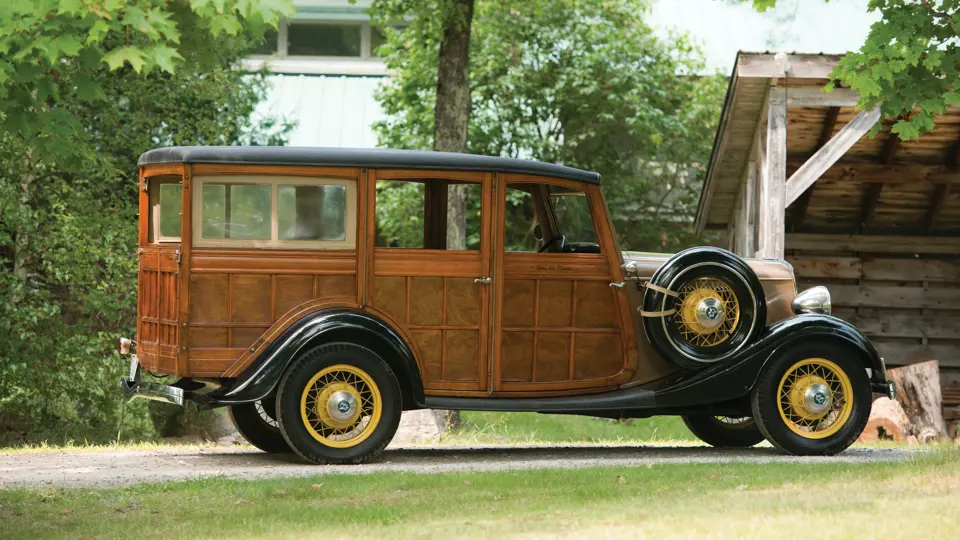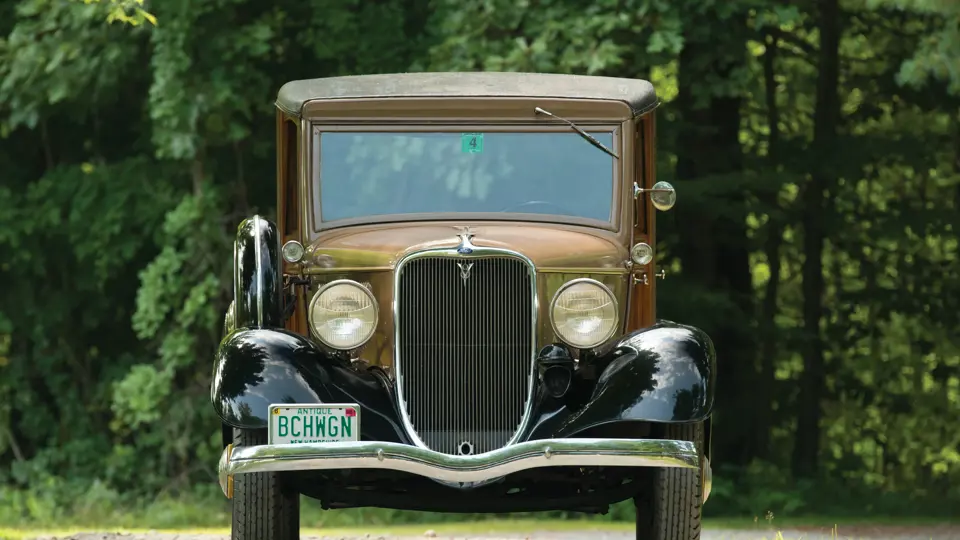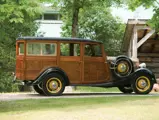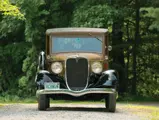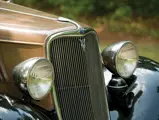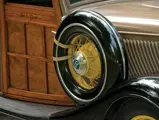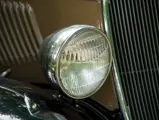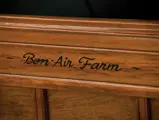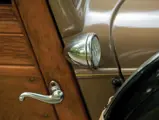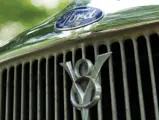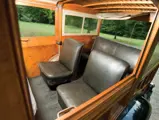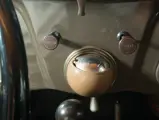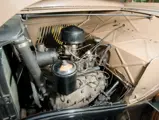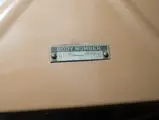Model 40. 75 bhp, 221 cu. in. L-head inline four-cylinder engine, three-speed sliding-gear transmission, solid front axle and three-quarter floating rear axle with front and rear transverse leaf-spring suspension, and four-wheel mechanical brakes. Wheelbase: 112 in.
The “station” in station wagon comes from the body style’s earliest descendants, the horse-drawn hacks that would transport travelers and their luggage to and from local train depots. These eventually evolved into Ford Model Ts and Dodge Brothers trucks, and by the 1930s, production of wood-bodied station wagons on various automobile chassis had become a distinctly American art. As they were not yet an icon of American family travel, they were often seen as utility vehicles on the estates of wealthy personages on both coasts, serving their original purpose of carrying luggage to and from their owner’s private railway cars or being used by the servants for trips into town. For New England families in particular, a station wagon, often fondly referred to by New Endlanders as a “beachwagon,” was as much a part of the summer house as open verandahs and a view of the sea.
“Woodies,” as they have become known since, required the constant care and attention that only a well-off family with a live-in staff could afford to give them. Bodies had to be stripped and re-varnished annually, and they had to be stored in a warm, dry carriage house. The cars rarely received such care after their first owners sold them, and today, wood-bodied wagons in good original condition are exceedingly rare.
The 1933 Ford V-8 Station Wagon offered here still carries the name of its original home on the front doors, Bon-Air Farms, of Hampton, New Hampshire. Following its use at the farm, the wagon spent time in a car museum in Glen, New Hampshire, from which Mr. Moir acquired it. He has continued to lovingly maintain it in its original, unrestored condition, having accumulated only 23,081 miles on its odometer at the time of cataloguing.
The condition of the factory paint is outstanding for its age, as it has only minor scratching and checking throughout, and the body is believed to still contain all of its original wood, which has aged beautifully to a rich, deep finish and is without the overly shiny modern varnishing of most restorations. The original interior is immaculate, with the upholstery showing only minor cracking and soiling, and the woodwork is of the same fine condition as the exterior. Even the dashboard gauges are still clear, and the steering wheel is solid. Indeed, the only major non-original component on the wagon is a more efficient 1935 carburetor, which is a common change.
This example, accompanied by a reprint of the 1934 Ford owner’s handbook, a 1933 Ford Proxlin color booklet, and its original side curtains, is one of the finest unrestored Ford Station Wagons known to survive today.
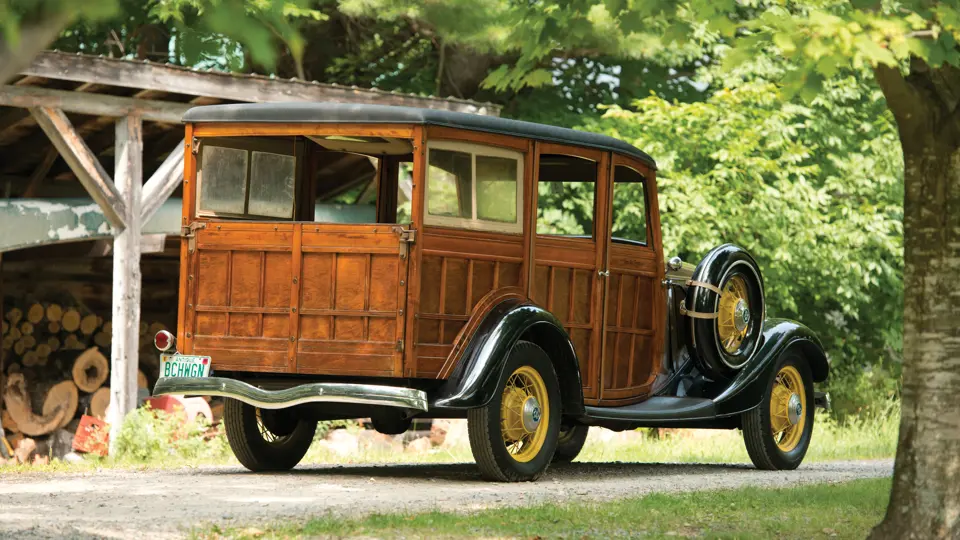
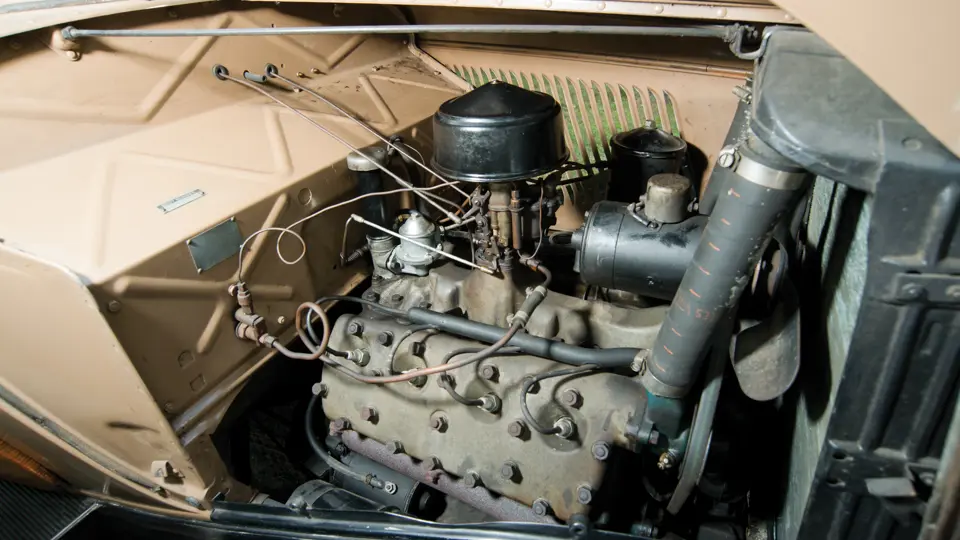


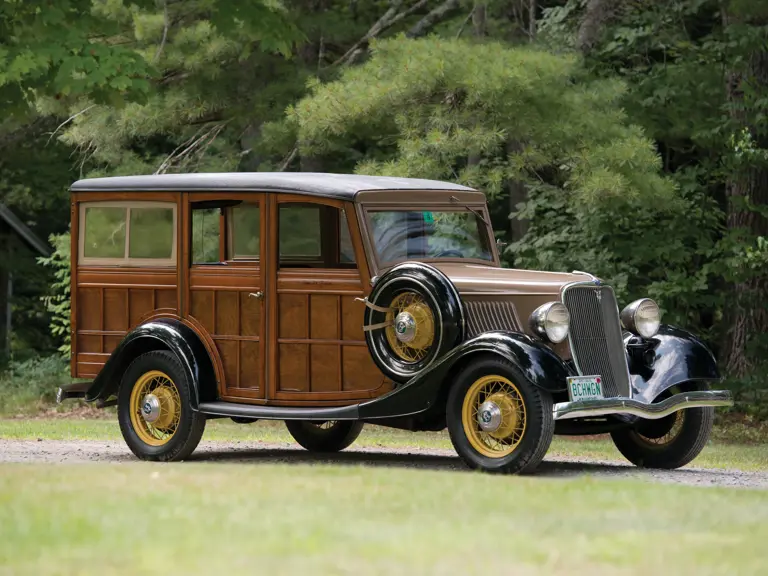
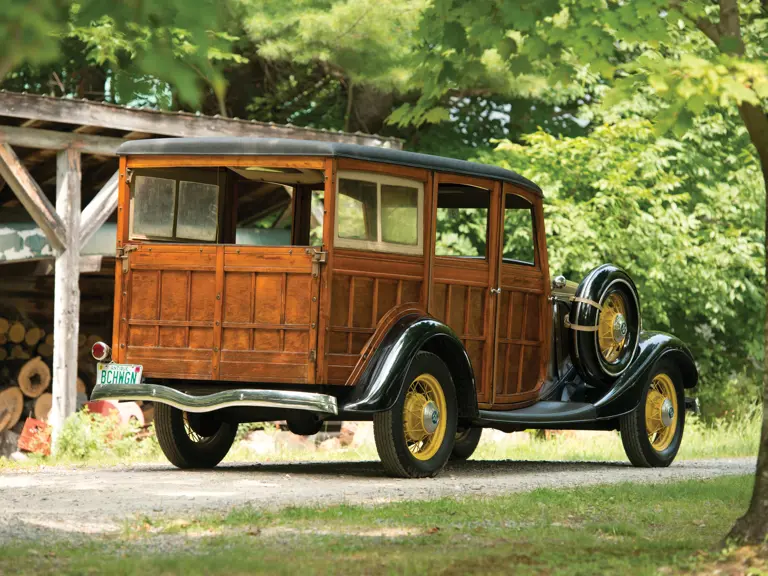
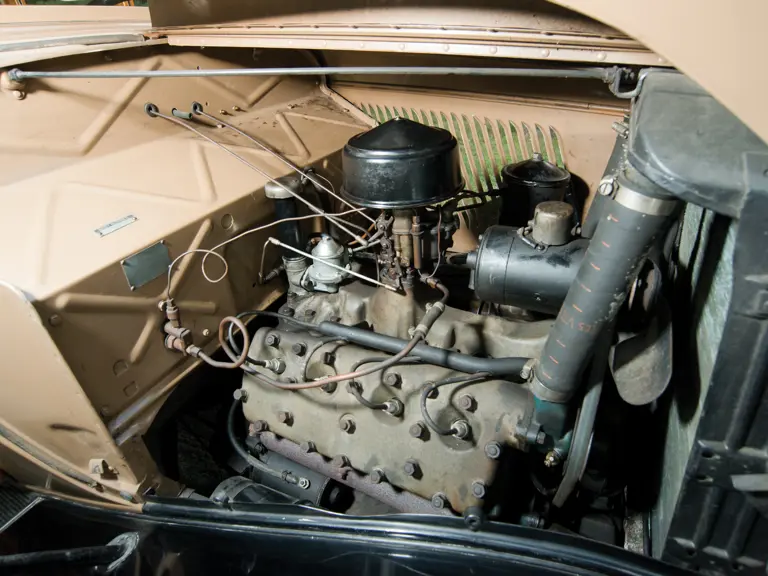
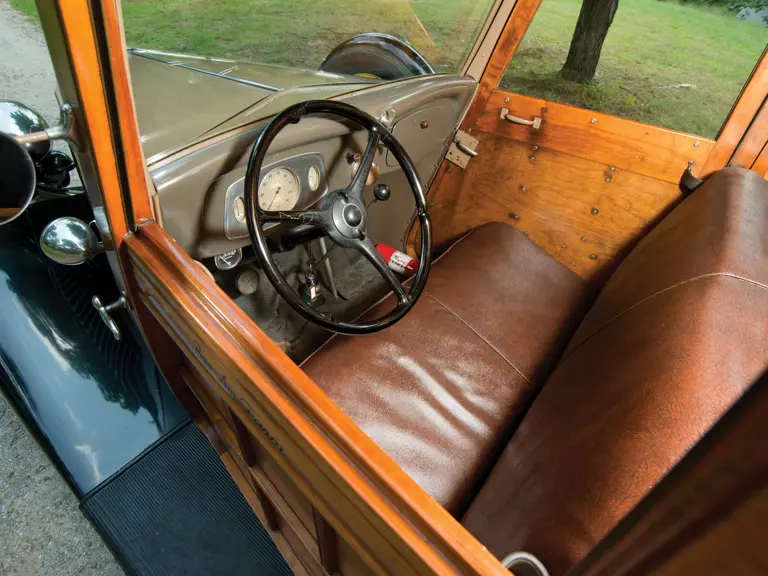
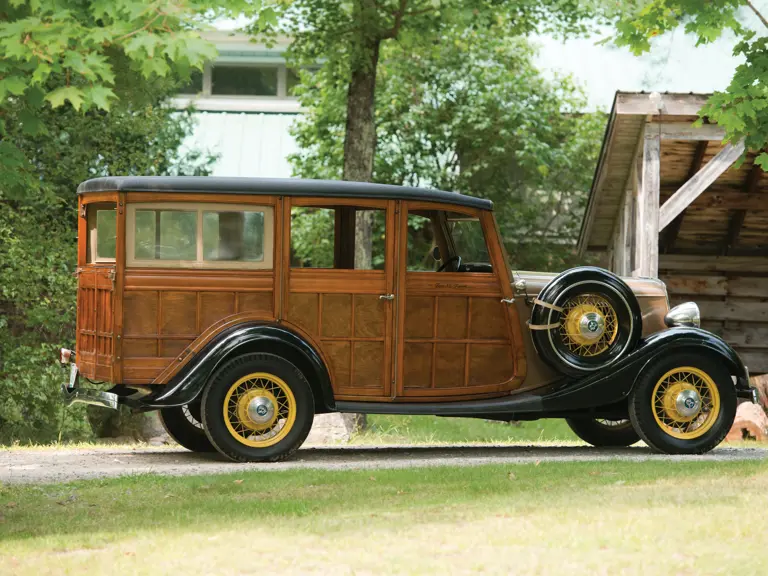
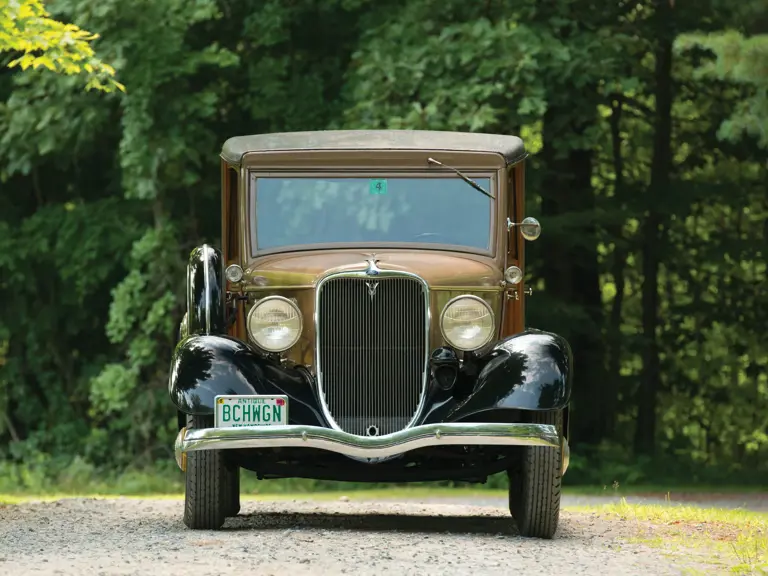
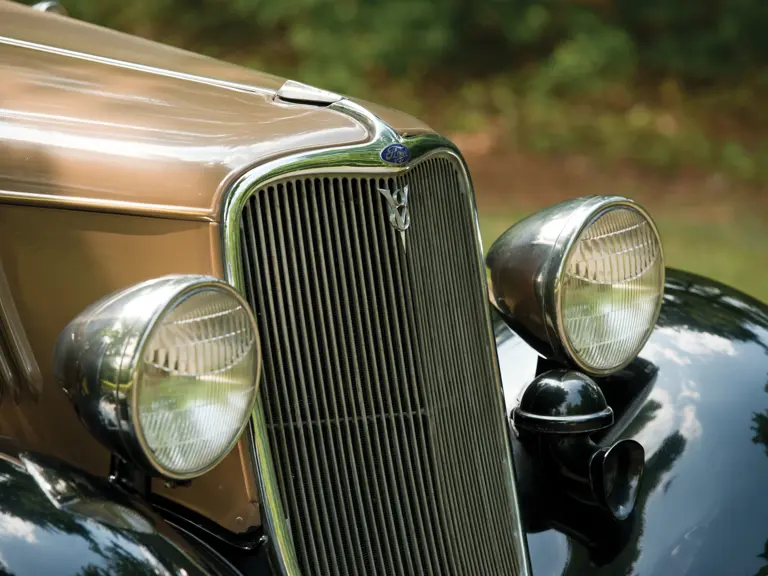

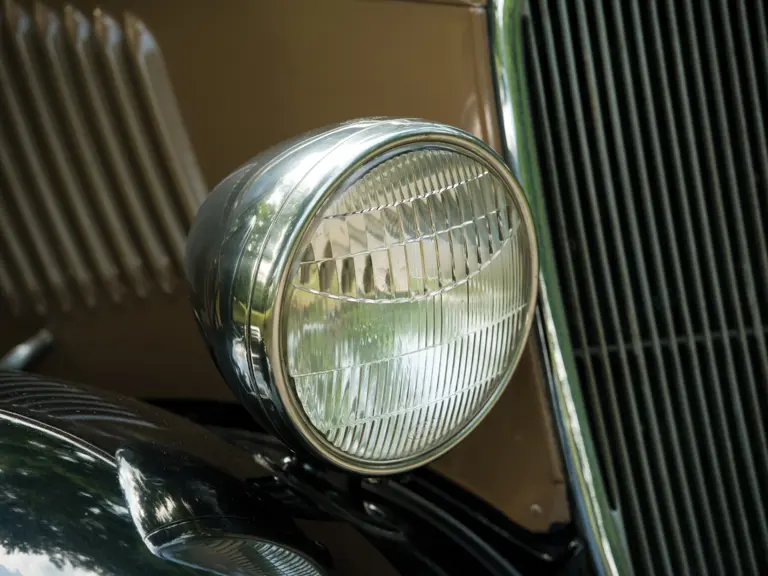

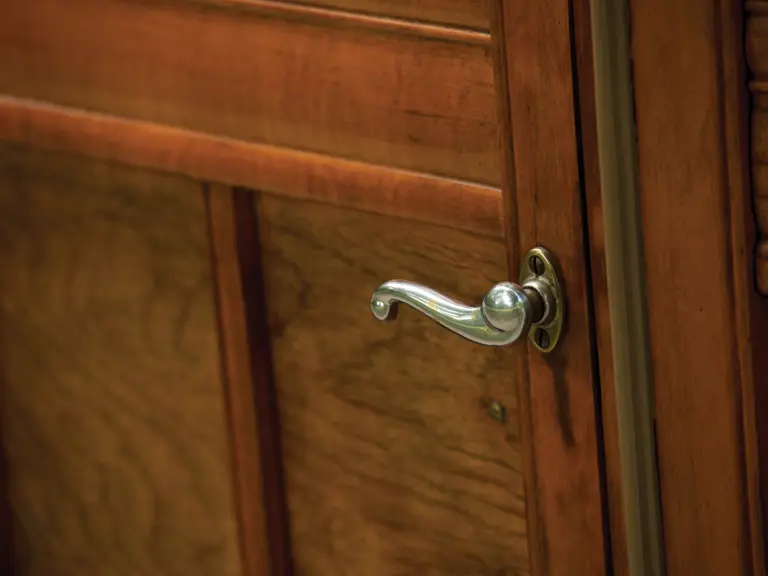

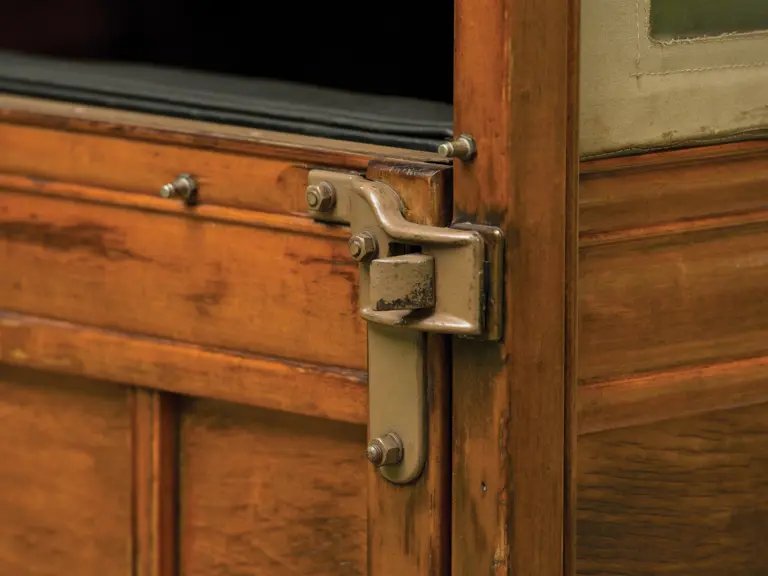
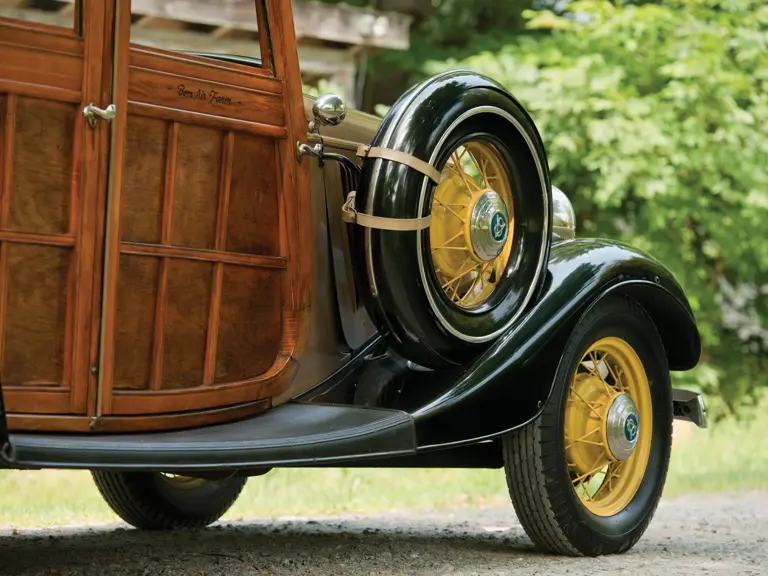
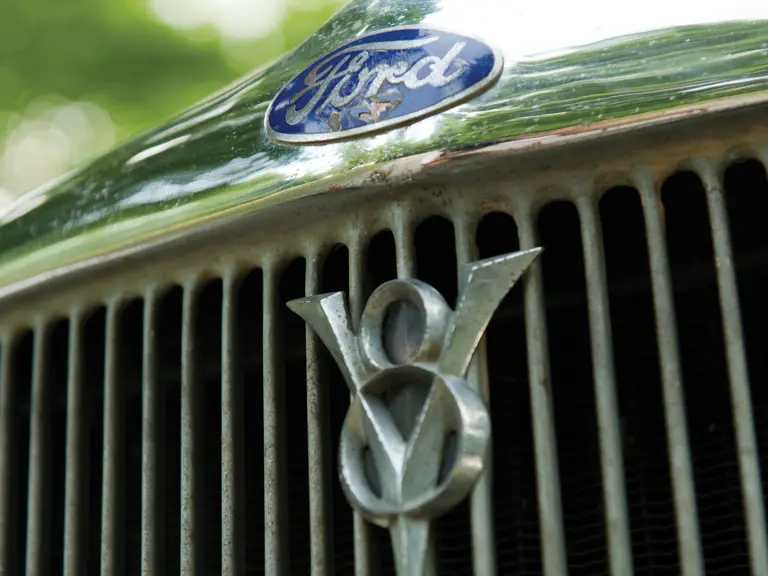
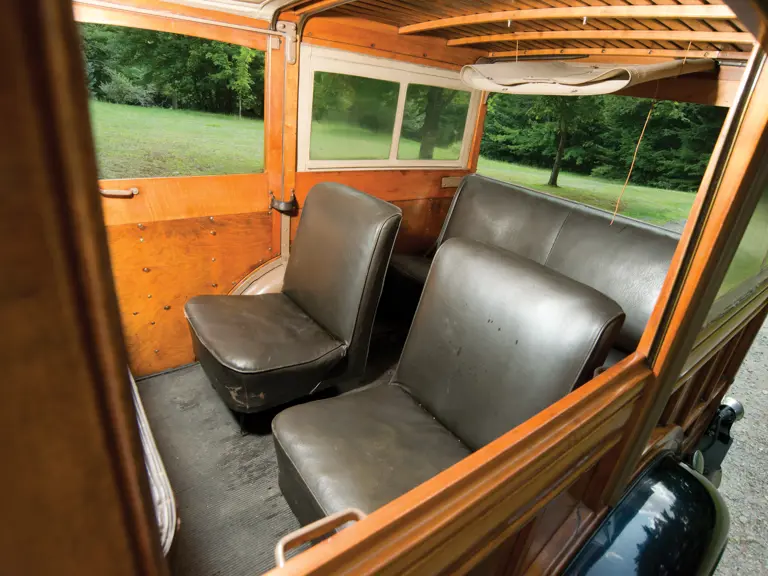
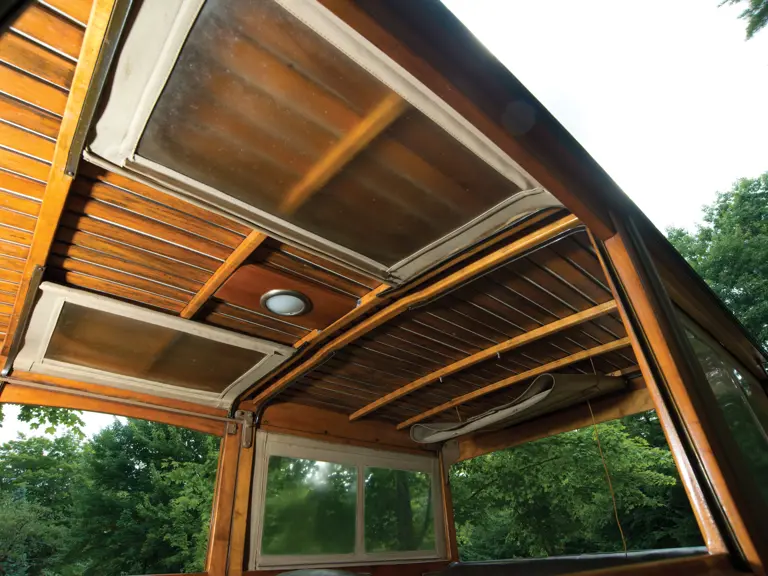
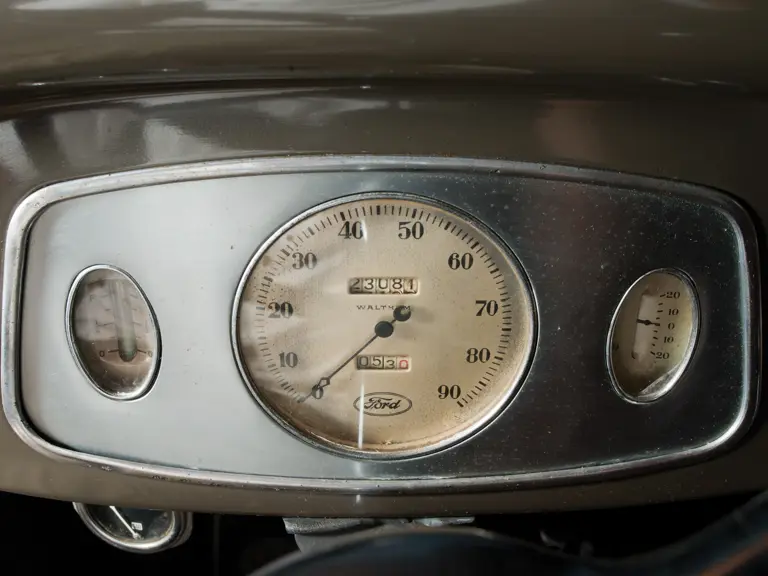
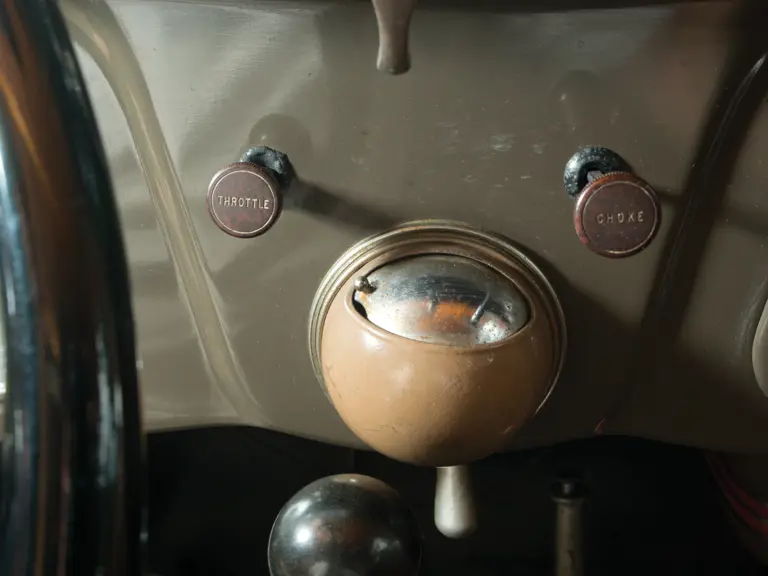
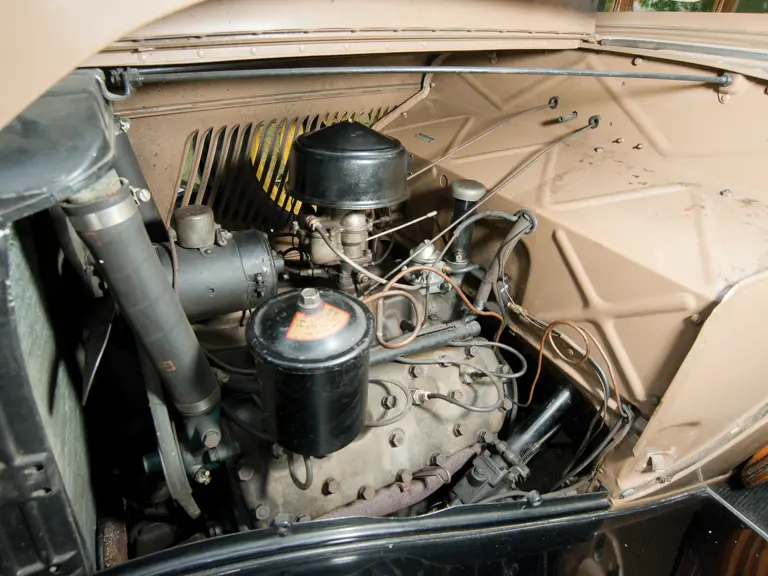
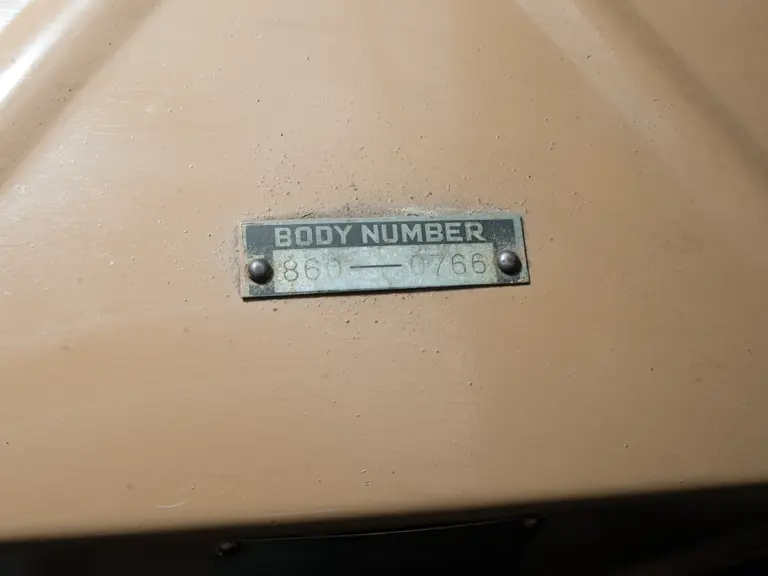
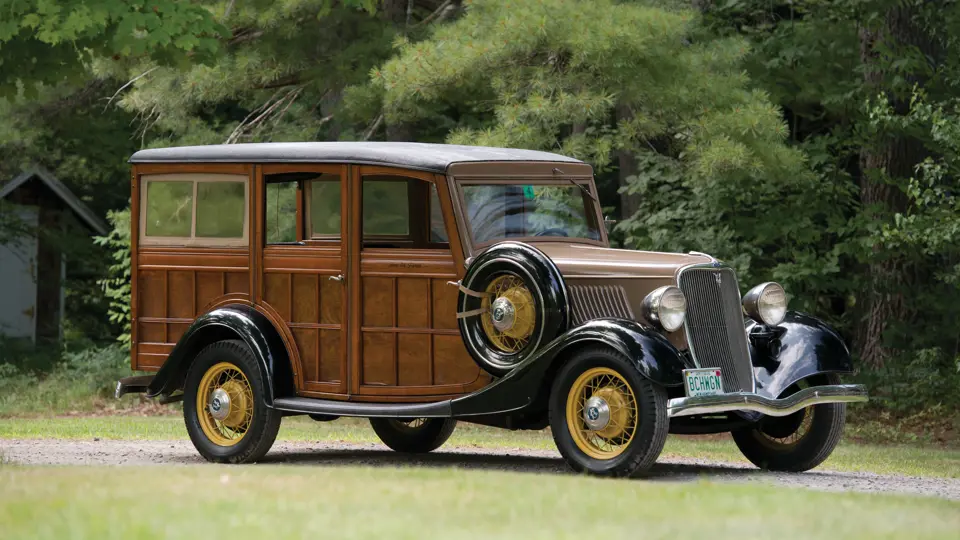
 | Hershey, Pennsylvania
| Hershey, Pennsylvania
